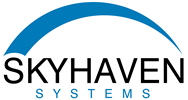Skyhaven Systems, LLC Selected By NASA Johnson Space Center To Develop And Deliver Advanced Water Electrolyzer For Lunar And Martian ISRU Applications
BOSTON, May 4, 2005 — Skyhaven Systems, LLC (RIL), formerly MicroCell Technologies, was selected by the NASA Johnson Space Center to develop and deliver its high pressure water electrolyzer. NASA’s in situ resource utilization (ISRU) efforts aim to use water electrolyzers for lunar and Martian missions. The reactor developed by RIL could be used for these ISRU applications given its compact size, low mass, and high operational efficiency.
NASA uses a number of water electrolysis units for generating oxygen and hydrogen gas for space applications. These missions range from generating propellants to supplying oxygen to crew and habitat. Consequently, the electrolyzer systems employ a variety of designs and system approaches that can generate high pressures or product gases with varying degrees of moisture, however, most of these approaches result in heavy and bulky systems.
Skyhaven Systems, LLC previously demonstrated to NASA Johnson Space Center its water electrolyzer technology that allows pressurized gas to be generated in a lightweight and compact design while operating in a passive mode without requiring water pumps. Based on these results, NASA selected RIL to develop and deliver a larger electrolyzer that will generate oxygen at a rate of 0.5 kg/hr in a device with a mass of 1000 g and a volume of 300 cc. This translates into high power densities of 6 kW/kg and 18 kW/liter, competitive metrics for an electrolyzer that can also generate high pressure to 2000 psi in a passive balance of plant approach.
RIL’s 0.5 kg O2/hr generator will exceed the minimum and maximum requirements for NASA’s Advanced Life Support requirements and exceed the minimum requirements for the ISRU. The electrolyzer approach is readily scaleable and can be used to produce even higher quantities of oxygen to meet the maximum target rates for the ISRU. RIL’s electrolyzer technology results in a more energy efficient process that minimizes electrical requirements, reduces the system mass, eliminates parasitic energy costs associated with the balance of plant, and improves the system reliability while functioning in a low-gravity environment. NASA may use this technology for generating propellants on-board spacecraft as well as on lunar or planetary stations or rovers.
Commercial applications of RIL’s electrolyzer technology beyond NASA needs may be used toward generating hydrogen economically as a part of the growing hydrogen economy. The electrolyzer could be used for generating hydrogen ranging from smaller laboratory gas generators to larger industrial generators. Additionally, the generated oxygen may be used for portable oxygen supply for medical and industrial applications.






